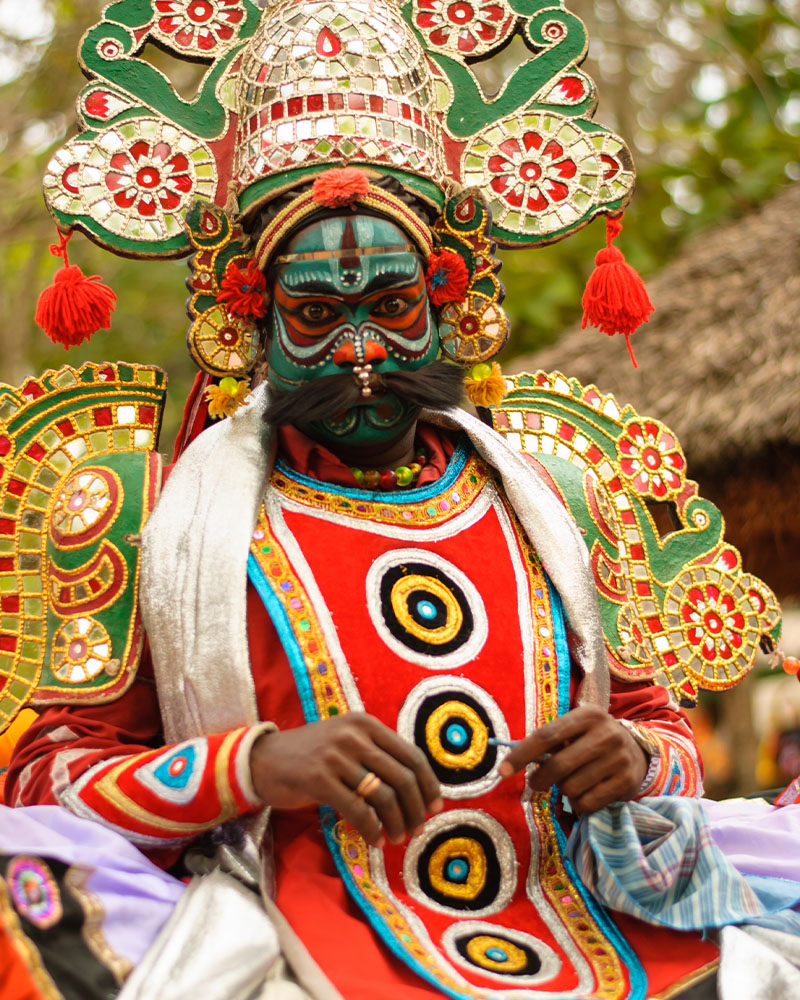Painted facial makeup and masks, therukoothu masks are used for therukoothu performances. The makeup for therukoothu performers is related to traditions of icon production, sacred mask making and face painting in the state. Each character’s makeup has a basic colour upon which are drawn conventional motifs such as the kiruta (facial hair extending from the sideburns to the chin), which can be easily recognised by the audience. Actors wear partial face masks as well as the makeup, golden shoulder plates, bright skirts, headgear and crowns. Wooden ornaments are used, along with small mirrors for masks.
Therukoothu costumes, colours and motifs signify forces of good and evil as well as characters’ virtues and flaws. Red face paint, for instance, is frequently used in the Mahabharata cycle. Green is associated with heroism, beneficence, morality, strength and power and is used for characters like Arjuna and Bhima. Villains’ faces are covered with black and white three-dimensional dots. Demonic characters such as Hirayam and Vallakaran usually have white fangs extending from their mouths.
Various intermediate shades are also used, depicting subtle differences in personality between characters. Mal (a curved line extending from ear to ear) is used to accentuate the eyes.
The makeup session generally takes the form of a ritual. An offering is made to a lighted lamp before the makeup begins. A figure of Ganesha is fashioned from turmeric powder and painted with the word Om. The make-up is then applied to the sound of music, using colouring agents such as vermillion and talcum powder.
Therukoothu masks and makeup are believed to ritually charge the performance space and trigger sacred entrancement among the performers and audience members. They are still used in performances in northern Tamil Nadu today.







